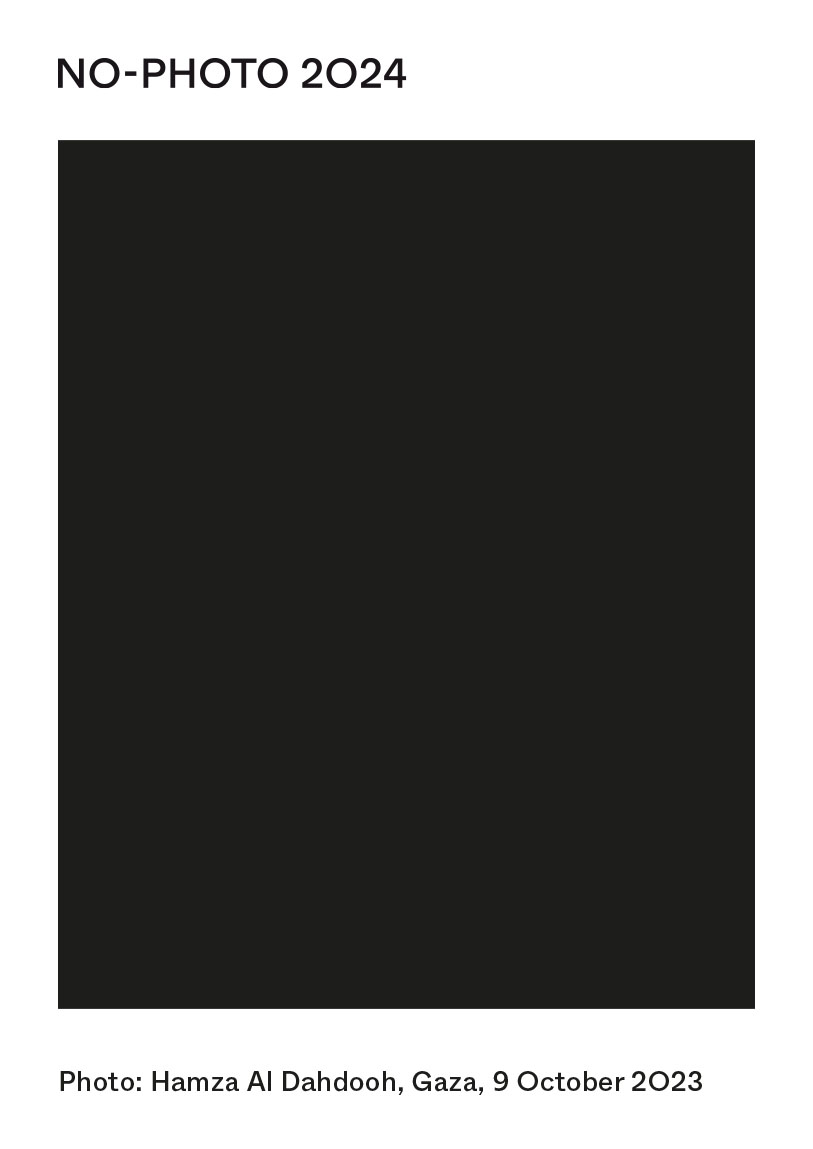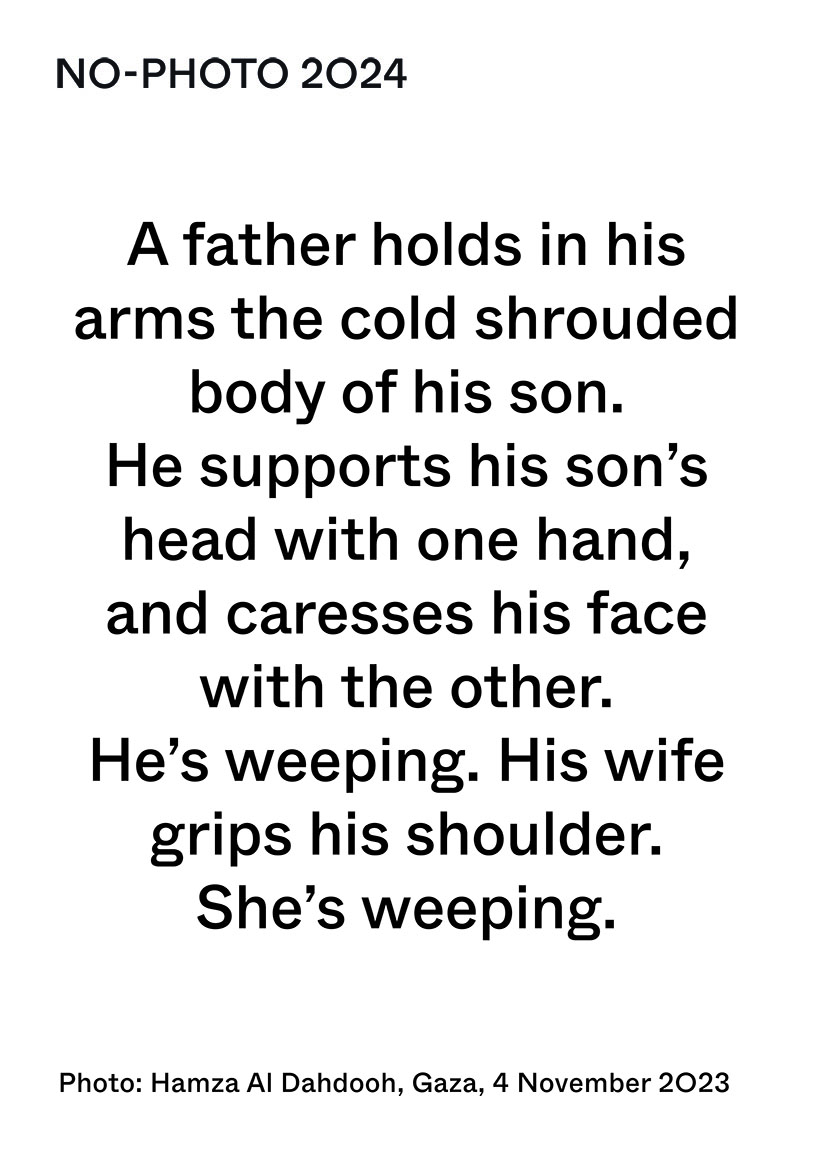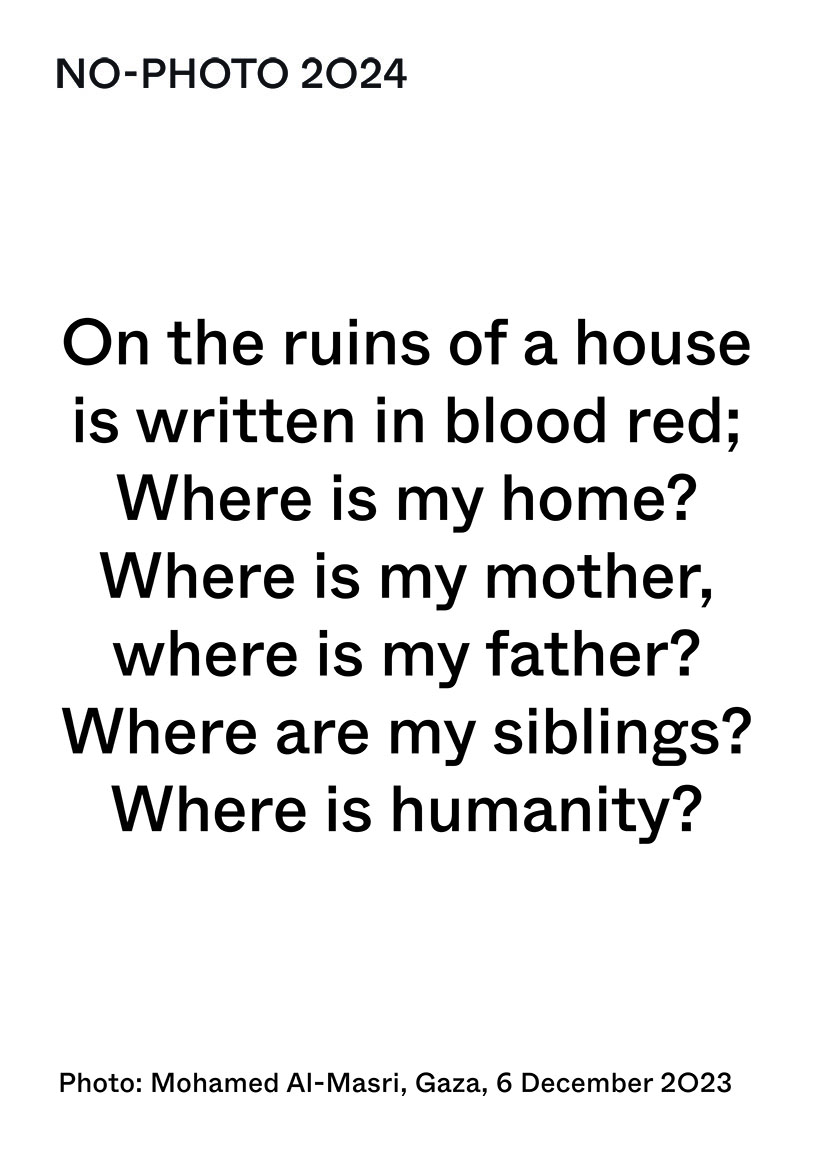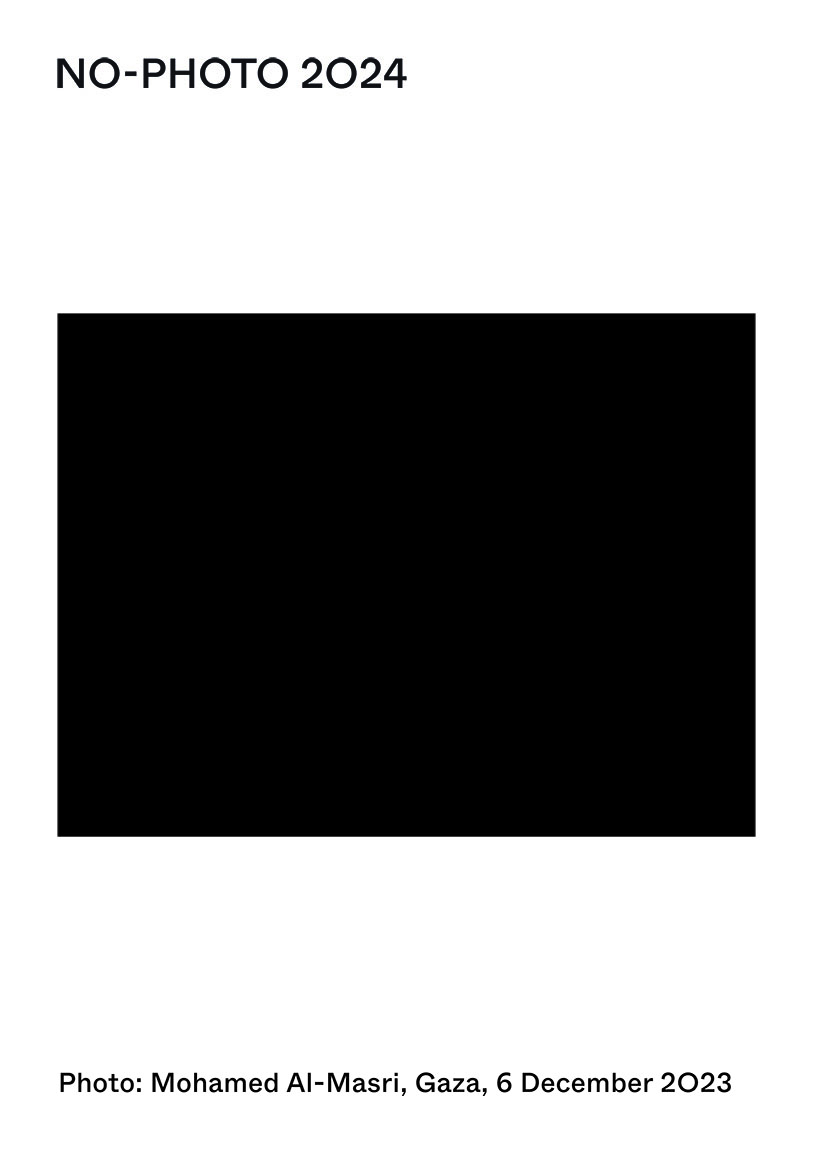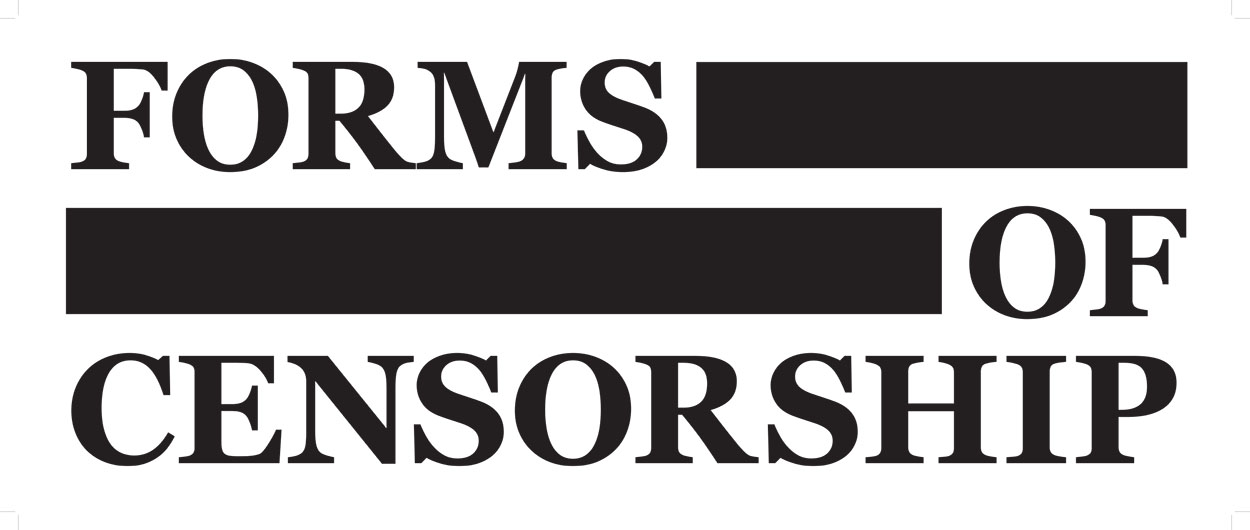
Forms of Censorship
Reproduction of original poster by artist Micha Olman, made for the “Down with the Occupation” exhibition, 1987. The Ali Kazak Collection. Source: The Palestinian Museum Digital Archive. Archive item no: 0001.01.0217.
Exhibition: 11 May to 8 June 2024
Artists: Nicole Barakat, Simon Blau, Alissar Chidiac & Karin Vesk (Archives of Treasures of Palestine), Lux Eterna, Alex Gawronski, Narelle Jubelin, Ali Kazak Poster Collection (various artists), Chips Mackinolty, Mparntwe for Falastin, James Nguyen, NO-PHOTO 2024, Sofia Sabbagh, Mahmoud Salameh
Opening
Saturday 11 May, 2 pm
Talk: Living Art Archives and Censorship’ with Alissar Chidiac & Karin Vesk (co-curators, Archives of Treasures of Palestine) and artists Nicole Barakat and Alex Gawronski
Wednesday 15 May: Al Nakba Day, marking 76 years since Israel’s 1948 occupation. The Nakba or the Palestinian Catastrophe, marks the destruction of Palestinian society and homeland.
Conversation
Sunday 19 May, 3 pm
‘Censorship and Dissent: Human rights law in public arts institutions—does it exist?’ with speakers Dr Randa Abdel Fattah (Palestinian Australian sociologist and author), Dr Paula Abood (writer, educator, community cultural organiser), Emeritus Professor Andrea Durbach (Former director of the Australian Human Rights Centre (now Institute) UNSW Law, member of the advisory committee of the Australian Human Rights Institute and Jewish Council of Australia), Lux Eterna (Palestinian Australian interdisciplinary artist and educator), in conversation with Alissar Chidiac (creative producer, community arts worker). NOTE: This conversation will be both recorded and live streamed (via Instagram).
Book HERE
Forms of Censorship queries an unhealthy culture of self-censorship developing in the arts. Artists witness genocide in Gaza and Israel’s intensified occupation of the West Bank and use art’s analytic insight and affective power to respond to events as they unfold. Some artists have found themselves criticised, threatened or even silenced for showing support for the Palestinian people or for simply being Palestinian. Forms of Censorship points on to an historical and increasingly pathological pattern at play.
The 670-kilometre apartheid wall built in 2001 is a concrete leitmotif for 76 years of Israeli military occupation of Palestine. Elsewhere green lines, military encampments, checkpoints and surveillance cameras are the enforcers. After Hamas’ October 7 2023 attack on Israeli civilians, Israel’s incommensurate revenge has butchered many more and destroyed the very landscape that sustains life.[1] In January, the International Court of Justice called Israel’s carnage in Gaza and the (now total) blockade of food, water and medicines “plausible genocide.” Famine and disease have set in. The Israeli government has not met the demand of the ICJ and world leaders to “take all measures within its power” to prevent genocide. Instead, the killings continue from air, land and sea and include even approved humanitarian workers (such as the seven World Central Kitchen workers including Australian Zomi Frankcom) as one preposterous thing after another is proposed to legitimate genocide, known as ‘creating facts’.[2] As we near 8 months of Genocide in Gaza, university campuses have joined long standing calls to boycott and divest.
In times of atrocity, art and reporting are crucial to evidence, to remember and assert moral witness. To paraphrase Palestinian poet Mahmoud Darwish, who will speak for those who are silenced? Reporters often risk their lives to tell the story, and from the first day of the bombing, the Israel Defence Force (IDF) has targeted media outlets and journalists, cultural centres and artists and universities and writers and the state has banned Al Jazeera media.[3] Taking up the flame on their behalf are Palestinian-Australian artists Mahmoud Salameh whose powerful black and white drawings showing the bravery of those targeted journalist witnesses facing a disproportionate power relationship and Lux Eterna’s self-portrait photograph wearing an embroidered Palestinian taub (dress) shot in dying light in the bush surrounding the Shoalhaven River (at Bundanon Residency, NSW) tells the story of exile and heartbreak.
The dignity of the marches (sometimes silent, sometimes lively) are a form of collective witness and testimony and Forms of Censorship represents the voices of Naarm/Melbourne, Gadigal/Sydney and Mparntwe/Alice Springs. The works represent conceptualism at its most dedicated. Sofia Sabbagh’s weekly diary drawings document the marchers’ creative energy. Nicole Barakat’s banners fly above the marchers with their child-like applique messages shimmering, a reminder those 35,000 killed or 700,000 permanently maimed are overwhelmingly children. Alex Gawronski compresses into a large print collage 7-months of words of anger and anguish from his weekly painted placards. One placard reproduces artist Kahled Jarrar’s beautiful (fake) passport stamp for Palestine ‘State of Peace’ encircling a sunbird.
In the “after the end of art” language of late modernism, Simon Blau’s two small ‘Flag’ paintings contrast hopes for peace and the ideals of post-war peace with a grimly realist flag inlaid with a glowering grey/red horizon (genocide) and a banner by legendary artist Chips Mackinolty calls on us all to “give peace a chance” and hopes for solidarity against the odds. Narelle Jubelin’s witness is to knit a concrete grey and black keening-shawl that offers cold comfort to the spectator and to re-caption ‘anonymous’ atrocity photographs in museum style on clunky Dymo Labels tape. The text in the remote collective Mparntwe for Falastin’s tracery of the keffiyeh, calls out to “Close Pine Gap”, the US spy base near Mparntwe/Alice Springs crucial to surveillance of the Middle East.
Meanwhile our art and cultural institutions respond to the daily carnage with hand-wringing self-censorship that prevents them from addressing (any) political conflict. Writers’ Festivals are one of the few cultural formations to defy intimidation campaigns, perhaps because writers are acutely sensitive to the history of book banning and book burning. In a world of increasing authoritarian instability, we need our funded arts organisations to be independent and boldly assert human rights. Instead, they are silent.
Australian institutional irresolution has a sorry history of targeted-censorship, and Forms of Censorship reviews a case in point of militarised language and off-screen actors and their privileges. Treasures of Palestine originated at Canberra Museum and Art Gallery without controversy in 2003, when the United Nations Security Council affirmed the vision of Israeli and Palestinian states existing side by side. The curator, Ali Kazak, former Head of the General Palestinian Delegation to Australia, had aimed to humanise a living culture with ancient roots and to contextualise, document and preserve an archive of Palestinian resistance from the British Mandate (1920-1948) to Al Nakba (the 1948 declaration of the State of Israel and mass dispossession and dispersal of Palestinians), the 1967 war and the 1982 invasion of Lebanon to the (2003) present.
At Sydney’s Powerhouse Museum, senior management removed an entire section of Treasures of Palestine, comprising posters, maps, 45 photos from UNRWA archives, and documentary films and sealed from public view almost half the planned exhibition area (see plan drawing). Community consultation was banned and replaced by shadowy external censors.[4] Forms of Censorship displays the opening sentence of the original introduction to Treasures of Palestine: “Palestinians and Jews have lived in the land now known as Israel for centuries. In 1948, with the creation of Israel as a Jewish state, many Palestinians became refugees exiled from their own homes” and an unattributed text that replaced it full of Orientalist cliché’s such as “Beauty is all the more satisfying when its fragility is appreciated.”
When questioned on ABC Radio’s Lateline (17 November 2003), the director pleaded “lack of space”.[5] Reproduced in the exhibition are some of the many protest letters to the museum, most from outraged Jewish listeners and a postcard “Censorship has NO place in OUR museums. Why? Ask the Director”, handed out by Arab Australian Arts Action Alliance (designed by Nicole Barakat). Of three documentary films, two were removed (one about embroidery was shown on all 3 monitors). Maps showing the diminishing land area of Palestine were replaced with a National Geographic map. The postcards were again handed out outside the annual Museums Australia conference on “conflict” in museums (Sydney University, November 2003). Meanwhile, across town, major venues cancelled their hosting of the Sydney Peace Prize award to Professor Hanan Ashrawi. (Sydney Town Hall followed by Sydney University’s Great Hall, were suddenly “unavailable”. Ashrawi’s acceptance speech was given at the Seymour Centre.) After the furore, Antony Loewenstein wrote ‘My Israel Question’ (2006) to explain the Zionist lobby’s well-connected influence on the arts, media and universities.
Forms of Censorship reproduces some 24 removed posters from Ali Kazak’s donations to The Palestinian Museum Digital Archive many drawn from 1967-1987 Down with the Occupation, print set (67 works) by Artists for Freedom of Expression, a group of Israeli and Palestinian artists exhibited in Tel Aviv to mark 20 years since the 1967 occupation of the West Bank, with a call for the return of the Occupied Territories to make an independent state possible. Treasures of Palestine continued to the South Australian Museum which, like Canberra, resisted censorship. Two decades after Treasures of Palestine, ex-diplomat Ali Kazak says simply, “we are calling for Australia to support justice, international law, equality, and peace in the Middle East. This is where Australia’s national interest lies.”[6]
The selection in Forms of Censorship includes posters by prominent artist Sliman Mansour, whose 1980 exhibition in Ramallah (occupied West Bank) was violently shutdown by the Israeli army for using “the colours red, green, black and white” of the Palestinian flag. Mansour’s reply was to design the now well-known watermelon resistance symbol. Forms of Censorship reprises this and other symbols of the Palestine struggle such as orange trees (in reference to land occupied in 1948) and olive trees (representing the 1967 occupation). By suppressing everyday symbols of Palestinian resistance, Israel seeks to normalise the occupation and deny the oppressed all humanity. Watermelon hatpins and loosely wrapped keffiyehs now join the historical runway of bloomer pants, red Phrygian caps, tricolour cockades and the suffragettes’ colour combo of white, green and violet as artists highlight the rights of progressive cultural and art practice.
Since Treasures of Palestine, curatorial censorship has seeped into our cultural institutions as rhetoric about ‘antisemitism’ has been weaponised by Israel. It became preposterous when the Australian Museum secured the exhibition Ramses and the Gold of the Pharaohs from Egypt’s Supreme Council of Antiquities, opening in late November 2023. The Australian Jewish Association (AJA) boasted on social media of its campaign “success” in having the museum remove the words “in Libya and Palestine” from one label describing a Pharaoh’s military history. When outed for censorship the museum’s face-saving counter was to add the words “in what today is known as Libya and Palestine” claiming the need for “geographical clarity” but abandoning factual history to kowtow to a lobby group bent on indigenous erasure.[7]
Artists look to their employers and representative organisations to support their right to freedom of speech and to integrate human rights law in their articles and code of practice. However only a handful of Australia’s public non-collecting contemporary art organisations responded to an email from Artists for Palestine (17 January 2024, sent to a group of fifteen funded spaces), asking for a human rights stance on the conflict and “an embodied social justice and decolonial struggle” in their program – hardly a revolutionary demand given contemporary art’s broad social engagement. One or two bolder funded organisations have held community events, others opted for a “respectfully impartial” silence, while most Boards simply did not reply.
Our arts employers “support a ceasefire” (who wouldn’t?) but do not seem willing to integrate human rights law in their charters. Why are our arts employers more scared about reputational or funding or sponsorship impacts than are willing to declare simple principles of human rights? At the very least, institutional hand wringing, twisting and turning while stifling discussion helps tip the scales towards a distanced and performative reception of genocide, and extends the Dickensian ‘self-censor for your livelihood’ message to artist supplicants.
Artists who express their views within the confines of the law should not have to risk their livelihoods or careers to do so. Mike Parr leaving Anna Schwartz Gallery after decades of successful partnership is a recent case in point. In a four-and-a-half-hour gallery performance Parr wrote that “Israel is an apartheid state and a tragedy for Jews everywhere.”[8] Most de-platformed artists, like Parr and a long list of others[9], explicitly oppose antisemitism and reject all forms of hostility towards people. All hate speech is abhorrent and, as Parr implies, conflating criticism of Israel with antisemitism feeds this tragedy. Yet many Australian universities and arts organisations self-censor behind the controversial ‘Working Definition’ of antisemitism proposed by the International Holocaust Remembrance Alliance (IHRA). For Jewish dissenters and progressive Jews, it constructs identity as a chilling ethnocratic monolith of one people, one destiny. Other definitions, such as the ‘Jerusalem Declaration on Antisemitism’ and the ‘Cambridge University Definition’, delineate more clearly between antisemitism and varied anti-Zionist positions and other criticisms of Israel’s occupation and governance. This precision is necessary to ensure fundamental rights, particularly freedom of expression with respect to disfavoured positions on Israel.
When Palestinian photographers were excluded from the PHOTO 2024 festival in March in Melbourne, artists staged a guerrilla street poster festival under the banner NO-PHOTO 2024, to highlight the unseen work of the 12 photographers in Gaza. The first installation comprised a pair of posters at a CBD tramstop: one a stark black rectangle with the photographer’s name at the bottom and the other with a text that evokes the absent image’s power. NO-PHOTO 2024’s introductory manifesto reads in part, “No mention of the hundreds of photographers who have died taking them” then adds, “The future is being shaped by art festivals that choose what we see. Hiding behind the pretty face of diversity, while refusing to see the genocide.”[10] The subsequent installations (usually outside festival venues) paired an absent work with an evocative text.
As a statement of solidarity with Palestine James Nguyen and Tamsen Hopkinson painted over their exhibition HuiHụi in black paint and “turned off the lights” at the Australian Centre for Contemporary Art, Melbourne. Nguyen, who works with language and minorities, then made two significant digital works by projecting snatches of found text onto fake gallery spaces. The first work titled, ‘Found text from leaked WhatsApp Groups’, is chilling as in its word-for-word strategies of how to target artists for their pro-Palestine views. The second work, ‘White Cube’, deflates the logic of arts organisations who snubbed Artists for Palestine while “seeking challenging projects that radically care for the cultural safety of our funders and sponsors”. Nguyen points out that every act of censorship is related to a larger pattern or system of pressure, at the expense of the weak. Virtue signalling cannot remedy the atrocity we are witnessing.
The international artworld hosts equally worrying examples of overt censorship over Palestine. Recall the most recent Documenta 15 (Kassel, 2022), where the artistic directors (the Indonesian artist collective Ruangrupa) reframed the contemporary art event as a school, for art to be a relational model of knowledge production grounded in democratic access. As in previous Documenta events, many of the artists involved addressed issues facing refugees and life in the camps. Palestinians, for example, ethnically cleansed in 1948 still live in dire refugee camps in Lebanon, Jordan or Syria and are one of the world’s largest refugee populations. In a horrific replay, over a million displaced people now huddle in Rafah having been assured by Israel it was a safe haven and all humanitarian access is closed.
Even before the show’s opening, German media accused individual pro-Palestinian artists of antisemitism. Soon after, Taring Padi’s historical and collaborative work People’s Justice (2002), a vast banner of shadow-puppet-style caricatures of despots and oppressors that had been widely exhibited (including at the Art Gallery of South Australia in Adelaide), was removed as it included an antisemitic depiction of a Mossad agent lurking amongst other colonial boss and henchmen stereotypes. The Documenta15 ‘schoolroom’ provided an opportunity for open and safe discussion on racial stereotyping and the legacies of both Indo-Dutch colonial and anti-Western resistance imagery. Sadly, this opportunity was lost as the German Minister for Culture simply accused Documenta15 and its curators of betrayal and Documenta’s CEO was stood down. The artists and the curatorial collective were left alone to face an orchestrated storm of media denunciation.
More recently, Mexican artist Odalys Burgoa and Chicanx documentary photographer Roy Baizan had their large outdoor altar honouring political activists and revolutionaries (Recordar y Unificar, a Día de los Muertos) cancelled by New York’s El Museo del Barrio, for the sole reason that the work included a scarf with the Palestinian flag on it! In reply, New York artists formed a National Coalition Against Censorship. A 2023 open letter circulating on Google and signed by over 4,000 people including well-known international artists and writers was published in Artforum Magazine. It railed against the deliberate shut down on discussion of 75 years of Israeli apartheid and called for an immediate ceasefire and the passage of humanitarian aid into Gaza. Artforum editor of six years David Velasco was sacked in the ensuing fallout.[11] An even more massive letter of petition called on the Venice Biennale to close Israel’s pavilion citing the prestigious event’s boycott of South Africa under the apartheid regime.
On dismantling apartheid, the iconic South African President Nelson Mandela said in 1997, “But we know too well that our freedom is incomplete without the freedom of the Palestinians, without the resolution of conflicts in East Timor, the Sudan and other parts of the world.”[12] Most artists share Mandela’s clear-sighted focus on historical and international parallels. Like the Republic of South Africa at the ICJ, art-world petitioners, and students at peaceful solidarity camps are testing proof of support for the Universal Declaration of Human Rights (1948) and the Genocide Convention. All are aware of the generation defining civil movements against South Africa’s Apartheid regime and the Vietnam War. The Australian Council of Trade Unions has condemned Israel’s killing of civilians and the use of starvation as a weapon of war. They call for permanent ceasefire and an end to military trade with Israel and to sanction certain Israeli officials.[13]
For centuries art has raised its voice in terrible times. Censorship aiming to silence dissent and manipulate public opinion has no place in our public institutions, and artists and audiences stand firm with the ICJ resolutions. Palestinian voices, the most powerless, living in bleakest circumstances, must be heard and their human rights endorsed. It is time for Australia to recognise Palestine as a nation.
Jo Holder
Nicole Barakat, ‘from the river’ to the sea’ and ‘palestinian life is sacred’ banners. Mixed media. Sydney Sunday Rally, 28 April 2024.
Opening of Forms of Censorship, The Cross Art Projects, 11 May 2024.
Opening of Forms of Censorship, The Cross Art Projects, 11 May 2024.
Opening of Forms of Censorship, The Cross Art Projects, 11 May 2024.
Acknowledgements
Special thanks to Alissar Chidiac, Ali Kazak and Karin Vesk for maintaining archives of the exhibition Treasures of Palestine and our dedicated speakers. Thank you: Belle Blau, Phillip Boulten, Gary Lee, John Menadue, Catriona Moore, Maurice O’Riordan, Deborah Vaughan for help and research. Thanks to Powerhouse Museum Archives, Sydney Trades Hall Collection (Neale Towart) and Gallery9. Printing by Darkstar Digital.
Resources
Australia Palestine Advocacy Network (APAN), Jewish Council of Australia, The Palestinian Museum Digital Archive, Palestine Poster Project Archives, Palestine Action Group (Sydney), Unionists for Palestine.
Essays
On Treasures of Palestine exhibition history: Karin Vesk, ‘Chasing at shadows. My museum question’, 2007. Re-written for Forms of Censorship, Part of Masters in Professional Writing at UTS. Supervisor Malcolm Knox. > Download as pdf
Alex Gawronski, ‘Palestine: Preparing the Ground, Against Erasure’, May 2024 > Download as pdf
Notes
- The Hamas attack on Israel of 7 October 2023, killed around 1,200 soldiers and civilians and more than 200 were taken hostage. In retaliation, Israel has killed 35,000 overwhelmingly non-combatant civilians (over half children) and permanently disfigured over 70,000. In Israel 1,200 Palestinians have been killed.
- In her report, ‘Anatomy of a Genocide’, written at the end of March, UN Special Rapporteur, Francesca Albanese, said that the Israeli military “intentionally killed” the seven World Central Kitchen aid workers in Gaza (including Australian Zomi Frankcom), to scare humanitarian relief donors and ensure the continued starvation of Palestinians. The killings happened a day after the ICJ’s second interim judgement. Israel has now closed all humanitarian access.
- The Committee to Protect Journalists claims at least 140 journalists and media workers have been killed. Many others are reported arrested, missing, or injured. After World Press Freedom Day (3 May) Israel legislated to shut down the local offices of Al Jazeera and implemented other media bans.
- In 2003, then NSW Premier Bob Carr established the Migration Heritage Centre in the Premier’s Department then relocated to the Powerhouse at a time when crime was being racialised as ‘Middle Eastern’. Meanwhile from 1998-2004, the museum’s Wattan Project (land of which the heart is most fond) was partnering with diverse Arab Australian communities to build innovative exhibitions and programs to counter racial profiling. The Wattan project officer assisted the museum’s curator of Treasures of Palestine, but the museum director’s office called the shots.
- Treasures of Palestine censorship story: Australian Jewish News, 17 and 24 October 2003, ABC Radio Lateline, 17 November & The World Today, 18 November, The Australian, 10 December 2003, City Hub, January 2004.
- Ali Kazak, 6 February 2024, see full story: https://johnmenadue.com/a-pro-israel-policy-will-become-electoral-poison-for-labor
- Crikey, 13 March 2014.
- Crikey, 7 December 2023, Ben Eltham and Jessi Ryan note, “The political economy of the emerging division is also instructive. The pro-Israel lobby in Australia is well-resourced and highly connected.”
- De-platformed artists: Candice Breitz in Berlin, Ai Weiwei’s show at Lisson Gallery, London, Mike Parr (Anna Schwartz Gallery cancelled Parr’s representation), US-Palestinian artists Samia Halaby and Jumana Manna had museum shows cancelled, El Museo del Barrio New York (artists op cit). Selected from many examples, all cases share a pattern of censorship carried out through indirect measures (disinvitation, cancellation, or withdrawal of funding or space). Not included are those in media and education who have lost their jobs because of organised campaigns.
- The Conversation, 15 March 2024, by Cherine Fahd. The 12 rejected are: Ali Jadallah, Amr Khaled, Ashraf Abu Amra, Ayman Al Gedi, Fadi Alwhidi, Fatima Shbair, Hamza Al Dahdooh, Mahmoud Bassam, Mahmud Hams, Mohamed Al-Masri, Mohammed Zaanoun, Momen Sameer.
- Artforum published an online letter calling for a ceasefire in Gaza and Palestinian liberation on 19 October 2023. (The letter also appeared in e-flux and Hyperallergic.) In Australia an Open letter was published in Overland and re-circulated by National Association for the Visual Arts and elsewhere. Artists for Palestine (A4Pal), Letter of Petition to the Board of Directors of Australian Contemporary Arts Organisations. All except 4A and NCCA, are substantially funded by the Commonwealth.
- Nelson Mandela, 1997, cited in Al Jazeera, ‘Unpack the past: Mandela, the keffiyeh and South Africa’s Palestine embrace’, 5 December 2023.
- Clearly unions and students are alert to Antony Lowenstein’s investigative writing in ‘The Palestine Laboratory. How Israel exports the technology of occupation around the world’ (2023), a work that meticulously tracks the global sale of “battle-proven” weapons, surveillance equipment and drones (usually to authoritarian regimes) that help Israel maintain its illegal occupation and blockade of Gaza. The Telegraph, London, 12 April 2024, Paul Nuki claims the Israeli drone makers now investigate the murder of the WCK Seven.


